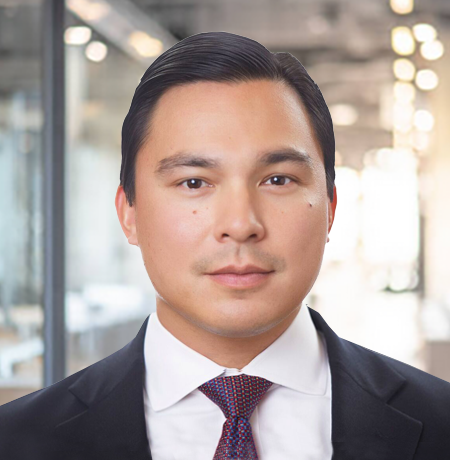
Healthcare is undergoing a major realignment as stakeholders compete for consumers’ attention and their healthcare dollars. The different strategies intersect at the physician’s office, and physicians today face an unprecedented array of practice options. Differences in practice ownership models, payment models, and geography further complicate the picture, making some options available in certain markets that are unavailable in others. Both physicians and those who wish to engage them are dealing with an “alphabet soup” healthcare market and need clarity in what opportunities are available and worth pursuing.
Options open as control of healthcare market changes
For many years, health systems held significant control in their markets, and physician groups, whether employed or independent, had strong incentives to align with one or more of their local systems. Today, the question of control is much less settled.
Health plans have been a major driver of change. The division of a national health plan—UnitedHealth Group’s Optum—now has the largest network of physicians in the country, including more than 53,000 physicians (5.4% of all U.S. physicians). In addition to direct employment of physicians, health plans are offering physician enablement services, including technological and administrative support, to help independent physician practices remain independent.
Similarly, start-up healthcare tech companies such as Signify Health and Aledade Health offer services that enable independent physician groups to participate and succeed in at-risk, value-based care arrangements. The payment models for these companies are also at-risk, based on their clients’ ability to achieve shared savings.
Private-equity firms have also become major players. Private equity has enabled the rapid, national expansion of physician groups such as Oak Street Health, Iora Health, ChenMed, and One Medical that offer at-risk primary care models for targeted populations (e.g., seniors, large employers) and attractive physician practice benefits, including smaller patient panels and more time to spend with patients.[1] Hundreds of specialty and multi-specialty practices have private-equity backing at a more local level and are focused on regional expansion. Private equity interest in primary care remains high, but more recently some sponsors have begun to explore value-based care models in select specialties as well, including oncology, orthopedics, and nephrology.
The migration of many procedures to outpatient settings has also empowered specialty and multi-specialty groups (and their investors). In many markets, surgeons can demand an ownership interest in ambulatory surgery centers. Organizations that do not provide an investment option will find it difficult to retain them.
Not all these options will be available in all markets, but the rapid pace of change and the growing number of players mean that many markets will be seeing more of these options available soon.
Implications of change for physician groups, health systems, and other stakeholders
Independent physician groups that want to remain open to new opportunities in their markets should consider the following:
- What is the group’s current ownership and governance model? Traditional practices owned by the physicians should consider what tradeoffs they would be willing to make if a super-regional or national physician group expressed interest in acquiring the practice or if they wanted to pursue private equity funding.
- What experience does the group have in value-based payment models? Physician practices that are receiving the most attention have experience in at-risk, value-based care delivery. If opportunities for true at-risk payment models are available in your local market, consider experimenting with them to build the group’s capabilities.
- What are the characteristics of your market today? To what extent, for example, have value-based payment models penetrated the market? What percentage of seniors have signed up for Medicare Advantage plans? How aggressively are local employers pursuing opportunities to lower their healthcare spend?
For health systems, important considerations include:
- How satisfied are your employed physicians? Physician groups currently employed by a health system might seek to evolve their relationships with their health system partners in response to changing physician preferences and evolving market dynamics.
- How much control are you willing to cede to physician partners? As noted above, physicians are increasingly interested in—and have investors offering opportunities for—equity ownership and governance participation. Control over clinical operations is also a concern for many physicians and may be the factor that makes one practice opportunity more attractive than another.
- How vulnerable is your system to new market entrants? Consider what the impact would be if a significant number of independent physician practices in your market aligned with a new competitor. What can your system do proactively to build a stronger alignment with independent physician groups?
For all stakeholders seeking to engage physicians, key questions are:
- Where does the most value reside, given the characteristics of the local market? Which practices generate the most ancillary revenue? Which are in the best position to manage covered lives? Where are the greatest opportunities to reduce medical spend and generate shared savings?
- What is most important to physicians? Are they seeking a better work-life balance? Do they want an equity stake? Are they interested in being involved in strategic and operational decision-making? Do they have sufficient practice operations support? Answers to these questions might vary significantly among physicians by generation, specialty, etc.
- What does my organization need from its physician relationships? Depending on the stakeholder, these needs might include better control of members’ medical spend, practice growth, referrals, improved patient experience, or any combination of these and other factors.
Physicians have always been at the center of healthcare. As market forces realign, the question for physicians is where they will have the most opportunity to realize their professional goals. For other stakeholders, the question is how to keep physicians at the center of their enterprise. In all cases, arriving at the best answer will depend on understanding the market and the opportunities it offers.
Deciding Among the Options
Deciding among the growing number of options available to physician groups requires prioritizing and weighing many considerations, including:
- Control over clinical operations
- Financial benefits
- Payer mix and available payment models
- Administrative burden
- Physician/organizational alignment
- Community benefits
- Patient experience
- Ownership interest
- Work-life balance
- Competitive landscape
[1] Oak Street Health and One Medical have made initial public offerings, and One Medical has acquired Iora Health.











